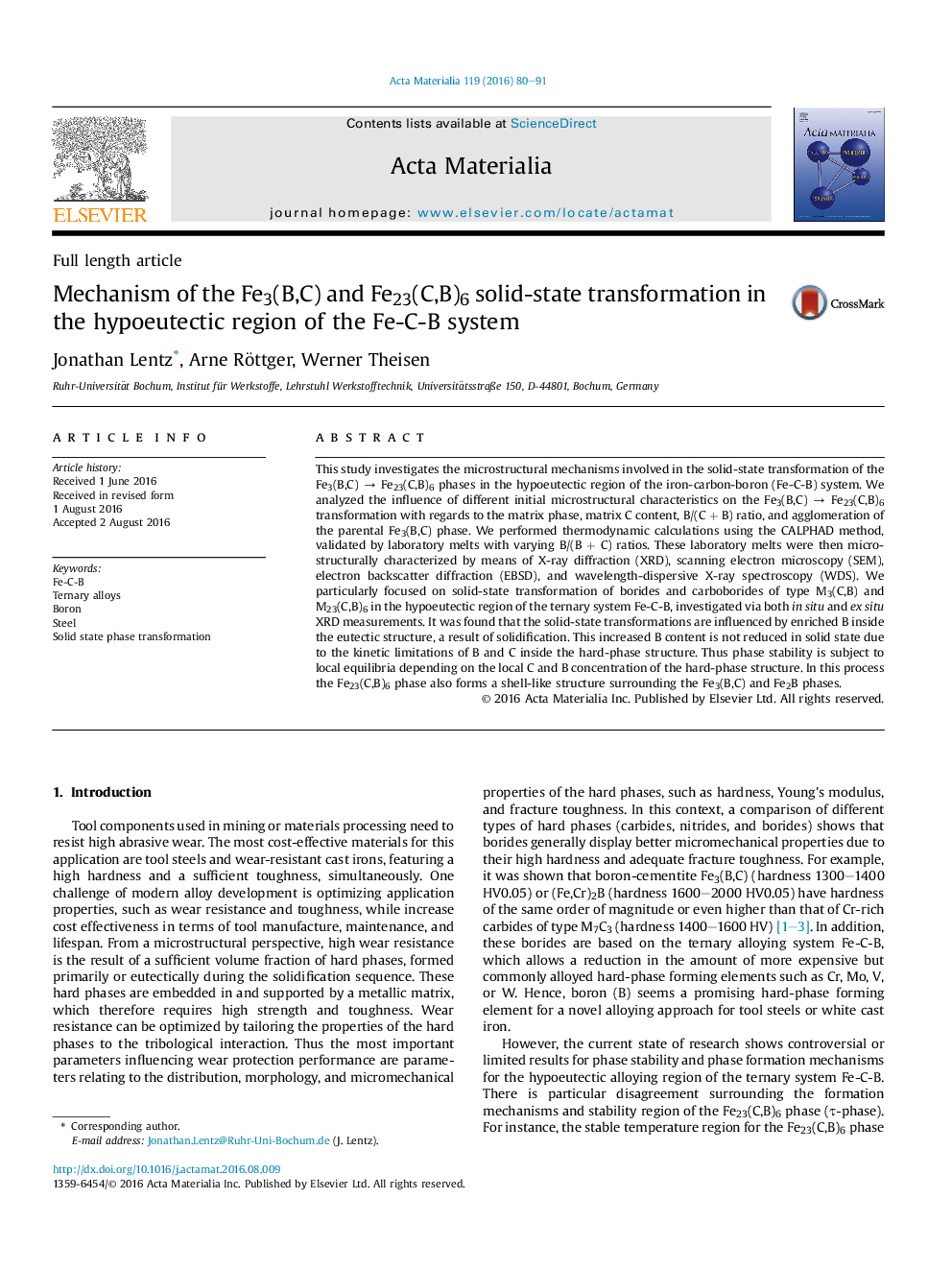| Article ID | Journal | Published Year | Pages | File Type |
|---|---|---|---|---|
| 1445123 | Acta Materialia | 2016 | 12 Pages |
This study investigates the microstructural mechanisms involved in the solid-state transformation of the Fe3(B,C) → Fe23(C,B)6 phases in the hypoeutectic region of the iron-carbon-boron (Fe-C-B) system. We analyzed the influence of different initial microstructural characteristics on the Fe3(B,C) → Fe23(C,B)6 transformation with regards to the matrix phase, matrix C content, B/(C + B) ratio, and agglomeration of the parental Fe3(B,C) phase. We performed thermodynamic calculations using the CALPHAD method, validated by laboratory melts with varying B/(B + C) ratios. These laboratory melts were then microstructurally characterized by means of X-ray diffraction (XRD), scanning electron microscopy (SEM), electron backscatter diffraction (EBSD), and wavelength-dispersive X-ray spectroscopy (WDS). We particularly focused on solid-state transformation of borides and carboborides of type M3(C,B) and M23(C,B)6 in the hypoeutectic region of the ternary system Fe-C-B, investigated via both in situ and ex situ XRD measurements. It was found that the solid-state transformations are influenced by enriched B inside the eutectic structure, a result of solidification. This increased B content is not reduced in solid state due to the kinetic limitations of B and C inside the hard-phase structure. Thus phase stability is subject to local equilibria depending on the local C and B concentration of the hard-phase structure. In this process the Fe23(C,B)6 phase also forms a shell-like structure surrounding the Fe3(B,C) and Fe2B phases.
Graphical abstractFigure optionsDownload full-size imageDownload high-quality image (506 K)Download as PowerPoint slide
